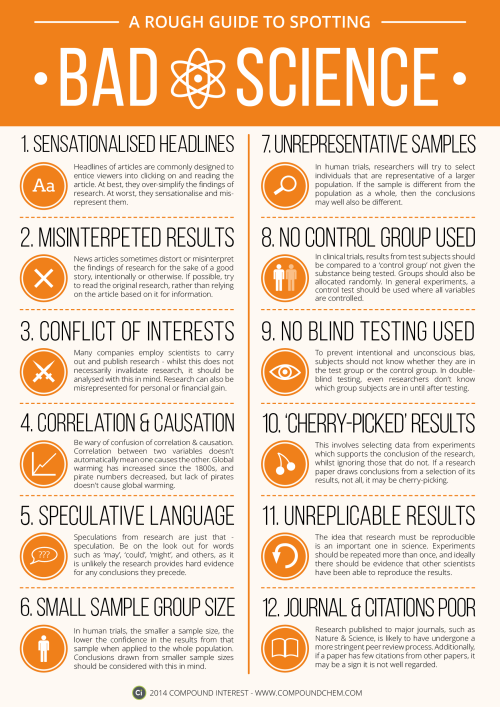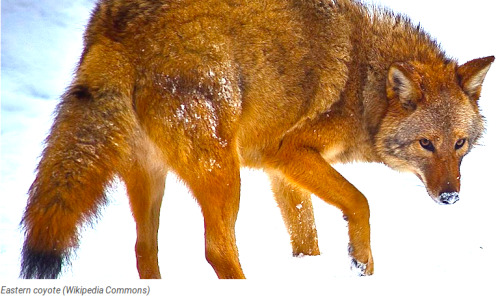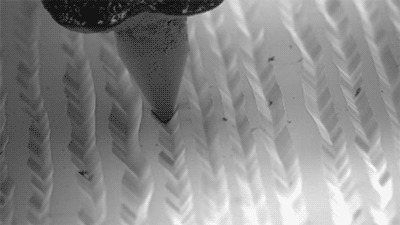Absence Of Serotonin Alters Development And Function Of Brain Circuits
Absence of Serotonin Alters Development and Function of Brain Circuits
Researchers at Case Western Reserve University School of Medicine have created the first complete model to describe the role that serotonin plays in brain development and structure. Serotonin, also called 5-hydroxytryptamine [5-HT], is an important neuromodulator of brain development and the structure and function of neuronal (nerve cell) circuits. The results were published in the current issue of The Journal of Neurophysiology online.
“Our goal in the project was to close the gap in knowledge that exists on role of serotonin in the brain cortex, particularly as it concerns brain circuitry, its electrical activity and function,” said Roberto Fernández Galán, PhD, Assistant Professor in the Department of Neurosciences at Case Western Reserve University School of Medicine. “For the first time, we can provide a complete description of an animal model from genes to behavior—including at the level of neuronal network activity, which has been ignored in most studies to date.”
Dr. Galán and his team used high-density multi-electrode arrays in a mouse model of serotonin deficiency to record and analyze neuronal activity. The study supports the importance of the serotonin which is specified and maintained by a specific gene, the Pet-1 gene – for normal functioning of the neurons, synapses and networks in the cortex, as well as proper development of brain circuitry. Serotonin abnormalities have been linked to autism and epilepsy, depression and anxiety. By more fully elucidating the role of serotonin in the brain, this study may contribute to a better understanding of the development or treatment of these conditions.
“By looking at the circuit level of the brain, we now have new insight into how the brain becomes wired and sensitive to changing serotonin levels.” added Dr. Galán.
More Posts from Science-is-magical and Others

Version 1 of ‘A Rough Guide to Spotting Bad Science’. Thanks for everyone’s suggestions earlier in the week, attempted to include as many of them as possible!
Download link here: http://wp.me/p4aPLT-ap

In chemistry, flame tests are used to detect the presence of certain elements, primarily metal ions, by analyzing the colour of the flame given off when heated.
above are Lithium (Li), Strontium (Sr), Sodium (Na), Copper(Cu), and Potassium (K).

the drum is filled with hot steam and then sprayed with cold water. the pressure on the outside of the drum is far more than inside. the pressures try to maintain and find balance taking the drum as a casualty.


A new species is evolving before scientists’ eyes in the eastern United States.
Wolves faced with a diminishing number of potential mates are lowering their standards and mating with other, similar species, reported The Economist.
The interbreeding began up to 200 years ago, as European settlers pushed into southern Ontario and cleared the animal’s habitat for farming and killed a large number of the wolves that lived there.
That also allowed coyotes to spread from the prairies, and the white farmers brought dogs into the region.
Over time, wolves began mating with their new, genetically similar neighbors.
The resulting offspring — which has been called the eastern coyote or, to some, the “coywolf” — now number in the millions, according to researchers at North Carolina State University.
Interspecies-bred animals are typically less vigorous than their parents, The Economist reported — if the offspring survive at all.
That’s not the case at all with the wolf-coyote-dog hybrid, which has developed into a sum greater than the whole of its parts.
At about 55 pounds, the hybrid animal is about twice as heavy as a standard coyote, and her large jaws, faster legs and muscular body allow her to take down small deer and even hunt moose in packs, and the animal is skilled at hunting in both open terrain and dense woodland.
An analysis of 437 hybrid animals found that coyote DNA dominates her genetic makeup, with about one-tenth of its DNA from dogs, usually larger dogs such as Doberman pinschers and German shepherds, and a quarter from wolves.
The animal’s cry starts out as a deep-pitched wolf howl that morphs into higher-pitched yipping — like a coyote.
Her dog DNA may carry an additional advantage.
Some scientists think the hybrid animal is able to adapt to city life — which neither coyotes or wolves have managed to do on their own — because her dog ancestry allows her to tolerate people and noise.
The coywolves have spread into some of the nation’s largest cities — including New York, Boston and Washington — using railway corridors.
The interbreeding allows the animal to diversify her diet and eat discarded food, along with rodents and smaller mammals — including cats, which coywolves eat skull and all — and they have evolved to become nocturnal to avoid humans.
The animals are also smart enough to learn to look both ways before crossing roads.
Not all researchers agree the animal is a distinct species, arguing that one species does not interbreed with another — although the hybrid’s existence raises the question of whether wolves and coyotes are distinct species in the first place.
But scientists who have studied the animal say the mixing of genes has been much faster, extensive and transformational than anyone had noticed until fairly recently.
“(This) amazing contemporary evolution story (is) happening right underneath our nose,” said Roland Kays, a researcher at North Carolina State.
Watch this report on coywolves.
Raw Story

Playing Tetris might help reduce the effects of PTSD. Researchers found that those who played it within 4 hours of seeing traumatic events had fewer flashbacks and intrusive memories. They hope to apply the findings to current treatment, which only deals with the effects after they occur.
Btw, you can play Tetris online for free. Any time. All the time.
Source
Listening To Music Releases Dopamine In The Brain
Have you ever been listening to a piece of music and experienced intense pleasure, even chills? Valorie Salimpoor and team (2010) conducted research that shows that listening to music can release the neurotransmitter dopamine.
A wide range of music — The researchers used PET (positron emission tomography) scans, fMRI, and psychophysiological measures such as heart rate to measure reactions while people listened to music. The participants provided music that they said gave them intense pleasure and chills. The range of music varied, from classical, folk, jazz, elecronica, rock pop, tango, and more.
Keep reading






Class in session as Planet X starts it off with our favorite dense objects:
Neutron Stars!
http://www.space.com/22180-neutron-stars.html
-
 pleasurehunter2000 liked this · 4 years ago
pleasurehunter2000 liked this · 4 years ago -
 science-is-magical reblogged this · 8 years ago
science-is-magical reblogged this · 8 years ago -
 workingtowardsapharmd reblogged this · 8 years ago
workingtowardsapharmd reblogged this · 8 years ago -
 moniblues liked this · 8 years ago
moniblues liked this · 8 years ago -
 mungo--park reblogged this · 8 years ago
mungo--park reblogged this · 8 years ago -
 anactualamphibian reblogged this · 9 years ago
anactualamphibian reblogged this · 9 years ago -
 pugglenurse reblogged this · 9 years ago
pugglenurse reblogged this · 9 years ago -
 simonmaryan liked this · 9 years ago
simonmaryan liked this · 9 years ago -
 mysmartside reblogged this · 9 years ago
mysmartside reblogged this · 9 years ago -
 i-p1ka-chu liked this · 9 years ago
i-p1ka-chu liked this · 9 years ago -
 aj-smk reblogged this · 9 years ago
aj-smk reblogged this · 9 years ago -
 bad-0mens reblogged this · 9 years ago
bad-0mens reblogged this · 9 years ago -
 effyeahevolution reblogged this · 9 years ago
effyeahevolution reblogged this · 9 years ago -
 nestor128 reblogged this · 9 years ago
nestor128 reblogged this · 9 years ago -
 aliterofcola-blog reblogged this · 9 years ago
aliterofcola-blog reblogged this · 9 years ago -
 chipspace reblogged this · 9 years ago
chipspace reblogged this · 9 years ago -
 chipspace liked this · 9 years ago
chipspace liked this · 9 years ago -
 onehippocampus liked this · 9 years ago
onehippocampus liked this · 9 years ago -
 whatiskate reblogged this · 9 years ago
whatiskate reblogged this · 9 years ago -
 taye89 reblogged this · 9 years ago
taye89 reblogged this · 9 years ago -
 taye89 liked this · 9 years ago
taye89 liked this · 9 years ago -
 whatiskate liked this · 9 years ago
whatiskate liked this · 9 years ago -
 lunar213 liked this · 9 years ago
lunar213 liked this · 9 years ago -
 bebravewalktall liked this · 9 years ago
bebravewalktall liked this · 9 years ago -
 the-arctickooks liked this · 9 years ago
the-arctickooks liked this · 9 years ago -
 gayjayray liked this · 9 years ago
gayjayray liked this · 9 years ago -
 whatareyouon93 reblogged this · 9 years ago
whatareyouon93 reblogged this · 9 years ago -
 chroniclesofachemist reblogged this · 9 years ago
chroniclesofachemist reblogged this · 9 years ago -
 mulligandd liked this · 9 years ago
mulligandd liked this · 9 years ago -
 doomroar liked this · 9 years ago
doomroar liked this · 9 years ago -
 biobehaviorism liked this · 9 years ago
biobehaviorism liked this · 9 years ago -
 severesweetsarcade-blog liked this · 9 years ago
severesweetsarcade-blog liked this · 9 years ago -
 wildcat-in-the-hat liked this · 9 years ago
wildcat-in-the-hat liked this · 9 years ago -
 nikography liked this · 9 years ago
nikography liked this · 9 years ago -
 swimmingreenhen reblogged this · 9 years ago
swimmingreenhen reblogged this · 9 years ago -
 xdemilpas liked this · 9 years ago
xdemilpas liked this · 9 years ago -
 celestialeccentric-blog liked this · 9 years ago
celestialeccentric-blog liked this · 9 years ago -
 whenplantingforests liked this · 9 years ago
whenplantingforests liked this · 9 years ago -
 astonergrowingup-blog reblogged this · 9 years ago
astonergrowingup-blog reblogged this · 9 years ago -
 iamgrantdb reblogged this · 9 years ago
iamgrantdb reblogged this · 9 years ago -
 iamgrantdb liked this · 9 years ago
iamgrantdb liked this · 9 years ago -
 blacknightwing reblogged this · 9 years ago
blacknightwing reblogged this · 9 years ago -
 theatorreshate liked this · 9 years ago
theatorreshate liked this · 9 years ago -
 comacoma liked this · 9 years ago
comacoma liked this · 9 years ago


